Related Research Articles
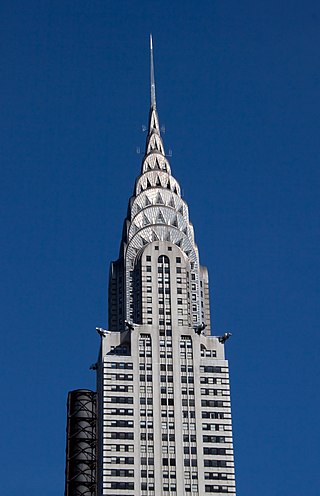
Art Deco, short for the French Arts Décoratifs, and sometimes just called Deco, is a style of visual arts, architecture, and product design, that first appeared in France in the 1910s, and flourished in the United States and Europe during the 1920s and 1930s. Through styling and design of the exterior and interior of anything from large structures to small objects, including how people look, Art Deco has influenced bridges, buildings, ships, ocean liners, trains, cars, trucks, buses, furniture, and everyday objects like radios and vacuum cleaners.

Art Nouveau is an international style of art, architecture, and applied art, especially the decorative arts. The style is known by different names in different languages: Jugendstil in German, Stile Liberty in Italian, Modernisme in Catalan, and also known as the Modern Style in English. It was popular between 1890 and 1910 during the Belle Époque period, and was a reaction against the academic art, eclecticism and historicism of 19th century architecture and decoration. It was often inspired by natural forms such as the sinuous curves of plants and flowers. Other characteristics of Art Nouveau were a sense of dynamism and movement, often given by asymmetry or whiplash lines, and the use of modern materials, particularly iron, glass, ceramics and later concrete, to create unusual forms and larger open spaces.

Jugendstil was an artistic movement, particularly in the decorative arts, that was influential primarily in Germany and elsewhere in Europe to a lesser extent from about 1895 until about 1910. It was the German counterpart of Art Nouveau. The members of the movement were reacting against the historicism and neo-classicism of the official art and architecture academies. It took its name from the art journal Jugend, founded by the German artist Georg Hirth. It was especially active in the graphic arts and interior decoration.
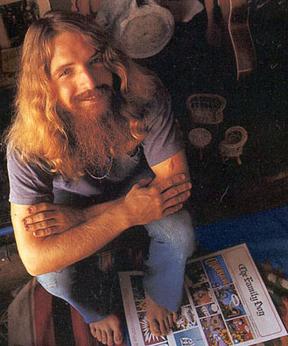
Richard Alden "Rick" Griffin was an American artist and one of the leading designers of psychedelic posters in the 1960s. As a contributor to the underground comix movement, his work appeared regularly in Zap Comix. Griffin was closely identified with the Grateful Dead, designing some of their best-known posters and album covers such as Aoxomoxoa. His work within the surfing subculture included both film posters and his comic strip, Murphy.

Milton Glaser was an American graphic designer. His designs include the I Love New York logo, a 1966 poster for Bob Dylan, and the logos for DC Comics, Stony Brook University, and Brooklyn Brewery.

The Vienna Secession is an art movement, closely related to Art Nouveau, that was formed in 1897 by a group of Austrian painters, graphic artists, sculptors and architects, including Josef Hoffman, Koloman Moser, Otto Wagner and Gustav Klimt. They resigned from the Association of Austrian Artists in protest against its support for more traditional artistic styles. Their most influential architectural work was the Secession Building designed by Joseph Maria Olbrich as a venue for expositions of the group. Their official magazine was called Ver Sacrum, which published highly stylised and influential works of graphic art. In 1905 the group itself split, when some of the most prominent members, including Klimt, Wagner, and Hoffmann, resigned in a dispute over priorities, but it continued to function, and still functions today, from its headquarters in the Secession Building. In its current form, the Secession exhibition gallery is independently led and managed by artists.

Liberty style was the Italian variant of Art Nouveau, which flourished between about 1890 and 1914. It was also sometimes known as stile floreale, arte nuova, or stile moderno. It took its name from Arthur Lasenby Liberty and the store he founded in 1874 in London, Liberty Department Store, which specialized in importing ornaments, textiles and art objects from Japan and the Far East. Major Italian designers using the style included Ernesto Basile, Ettore De Maria Bergler, Vittorio Ducrot, Carlo Bugatti, Raimondo D'Aronco, Eugenio Quarti, and Galileo Chini. The major event of the style was the 1902 Turin International Exposition, which featured by works of both Italian designers and other Art Nouveau designers from around Europe.

Constructivism is an early twentieth-century art movement founded in 1915 by Vladimir Tatlin and Alexander Rodchenko. Abstract and austere, constructivist art aimed to reflect modern industrial society and urban space. The movement rejected decorative stylization in favor of the industrial assemblage of materials. Constructivists were in favour of art for propaganda and social purposes, and were associated with Soviet socialism, the Bolsheviks and the Russian avant-garde.
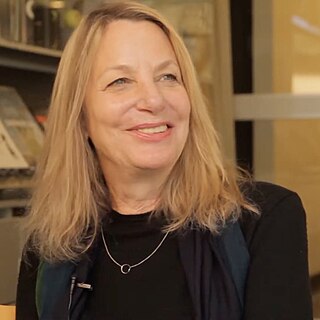
Paula Scher is an American graphic designer, painter and art educator in design. She also served as the first female principal at Pentagram, which she joined in 1991.
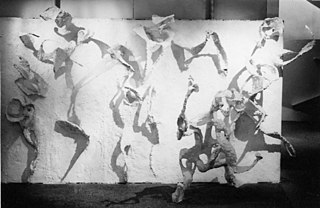
This Is Tomorrow was an art exhibition in August 1956 at the Whitechapel Art Gallery on Whitechapel High Street in London's East End, UK, facilitated by curator Bryan Robertson. The core of the exhibition was the ICA Independent Group.

April Greiman is an American designer widely recognized as one of the first designers to embrace computer technology as a design tool. Greiman is also credited, along with early collaborator Jayme Odgers, with helping to import the European New Wave design style to the US during the late 70s and early 80s." According to design historian Steven Heller, “April Greiman was a bridge between the modern and postmodern, the analog and the digital.” “She is a pivotal proponent of the ‘new typography’ and new wave that defined late twentieth-century graphic design.” Her art combines her Swiss design training with West Coast postmodernism.
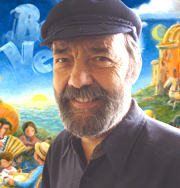
Warren Dayton is an American illustrator, artist and graphic designer best known for his posters from psychedelic art era, a pioneer of the use of T-shirts as an art medium, creator of corporate branding & logos such as Thomas Kinkade’s Lightpost Publishing, and internationally award-winning book, editorial, commercial illustration and typography. Dayton's work ranges from funny and whimsical drawings used in many magazines and books, corporate branding and logos to illustrated features and books that have been honored by selection in design competitions and earned grants from the National Endowment for the Arts. He has authored and illustrated several books that have become collectors items; he continues to illustrate murals, posters and books. He founded Artifact, Ink studios in 2001 and currently works in the studio in the Sierra Foothills with several other artists and designers.
M/M (Paris) is an art and design partnership consisting of Mathias Augustyniak and Michael Amzalag, established in Paris in 1992.

William Stout is an American fantasy artist and illustrator with a specialization in paleontological art. His paintings have been shown in over seventy exhibitions, including twelve one-man shows. He has worked on over thirty feature films, doing everything from storyboard art to production design. He has designed theme parks and has worked in radio with the Firesign Theatre.

Mehdi Saeedi, is an Iranian-born artist and designer based in Philadelphia and he is a part-time faculty of graphic design at the Towson University in Maryland, United States. His aesthetics have become a mainstay of design in many regions, especially in those using the Arabic and Iranian scripts as their alphabet.
Paul Brooks Davis is an American graphic artist.

John Charles Casado is an American graphic designer, artist and photographer, best known for designing logos for the first Macintosh computer, Esprit, and New Line Cinema, as well as numerous album covers for the Doobie Brothers, Carole King, and others.

Charles Buckles Falls, also known as C. B. Falls, was an American artist and member of the Decorative Designers, most known for his illustrations and writings. He is the author and illustrator of several books, including The ABC Book. He is also known for his World War I poster advertisements, such as Books Wanted.

Hans Schleger was a German-Polish-Jewish and later British graphic designer.
Joseph Binder was an Austrian graphic designer and painter. He is recognized as one of the pioneers of the modern poster, noted for his refined, stylized images and high-impact colors. Some of his best known works include posters for the 1939 New York World’s Fair, the U.S. Army Air Corps and the American Red Cross.
References
- ↑ "KIOSK 46". Jessica Marak. Retrieved 11 October 2015.